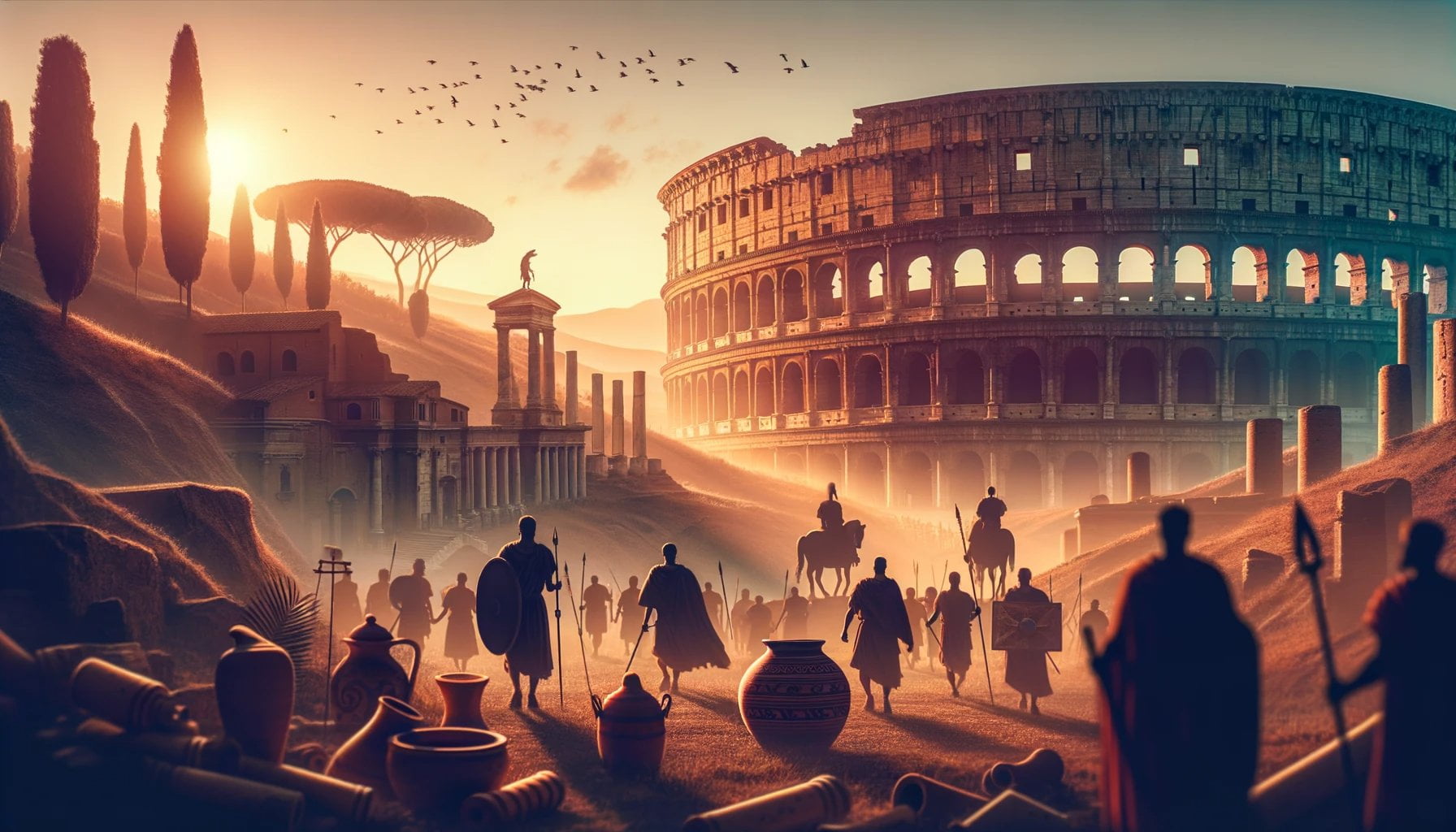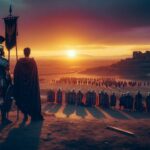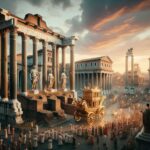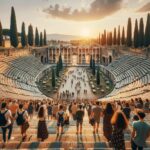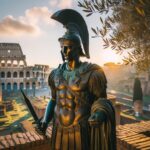Embark on a thrilling journey through time as we delve into the captivating realm of ancient Rome. Prepare to be enchanted by a trove of intriguing facts and little-known tidbits about one of history’s most illustrious civilizations. From the grandeur of the Colosseum to the political machinations of Julius Caesar, we will uncover the hidden gems of Roman culture and history. Join us as we unearth the secrets of an empire that shaped the course of Western civilization. Prepare to be fascinated by the ancient Roman trivia that awaits you.
Key Takeaways:
- Ancient Rome Quiz on Britannica is a great resource for exploring various questions and answers about ancient Rome.
- The only ancient Roman lighthouse still in use is mentioned in one of the quiz questions on Britannica.
- The battle that marked the beginning of serious Germanic inroad is another topic covered in the Britannica quiz.
- Quiz Trivia Games website offers a comprehensive quiz with 50+ Ancient Rome Quiz Questions and Answers.
- ProProfs has 26 Ancient Rome quizzes, questions, answers, and trivia available on their website.
- Fun Trivia has over 200 Roman history trivia quizzes, providing a wide range of engaging content.
- Quiz Everyday offers an Ancient Rome Trivia Quiz with free history quiz questions and answers.
- JetPunk hosts an Ancient Rome Trivia Quiz, allowing users to test their knowledge of Roman history.
- History Hit provides 100 interesting facts about Ancient Rome and the Romans, offering a deeper understanding of the era.
Ancient Roman Trivia
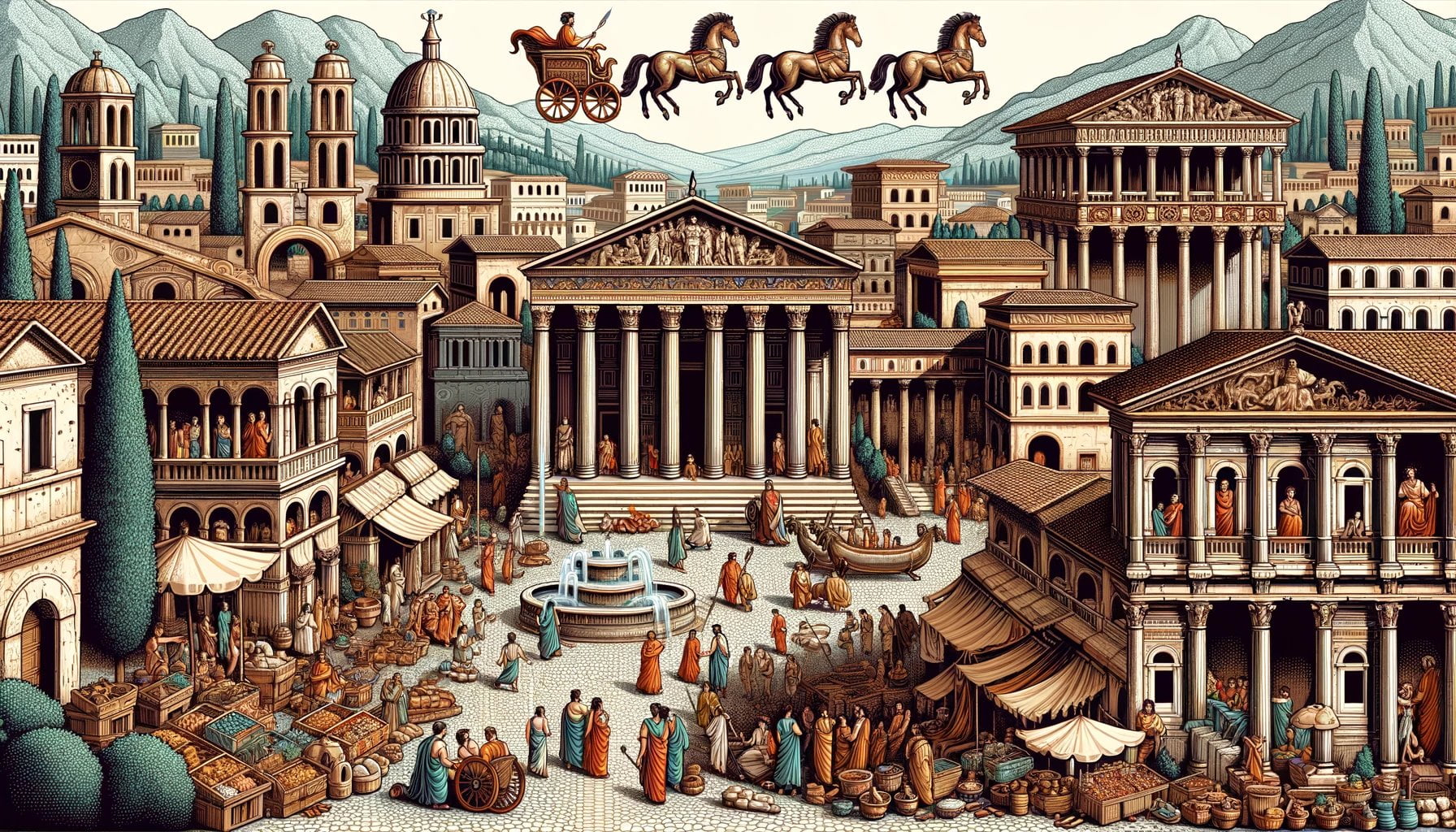
Welcome to an exciting journey through the fascinating world of ancient Rome! In this article, we will unearth intriguing tidbits and hidden secrets about this remarkable civilization. From political structures to cultural practices, we will delve into various aspects of ancient Roman life and unravel its enigmatic trivia. So, fasten your seatbelts and get ready to explore the captivating world of Rome!
Rome: The Eternal City
The Birth of Rome: The story of Rome begins with its legendary founder, Romulus, who, as myth has it, was raised by a she-wolf. This tale adds a touch of intrigue and symbolism to the city’s origin, setting the stage for centuries of grandeur and power.
The Roman Lighthouse: Did you know that the only ancient Roman lighthouse still in use today can be found on the island of Corfu in Greece? Known as the “Tower of Hercules,” its construction dates back to the 2nd century AD. This remarkable structure is a testament to the exceptional engineering prowess of the Romans.
The Battle of Adrianople: Witnessing the beginning of serious Germanic inroads, the Battle of Adrianople marked a monumental turning point in Roman history. It was during this battle in 378 AD that the Roman Empire suffered a devastating defeat against the Visigoths, leading to significant consequences for the empire’s future.
Roman Society and Culture
Roman Numerals: The Romans had a unique numerical system known as Roman numerals. While it may seem more complex compared to our decimal system, it remains an important part of Roman heritage. Can you decipher the number “XLIX”? That’s right, it represents the Roman numeral for 49!
Amphitheaters: The Gladiatorial Spectacles: One of the most iconic forms of entertainment in ancient Rome was the gladiatorial games held in grand amphitheaters, such as the Colosseum. These savage combats between gladiators and wild animals captivated the masses and revealed the Romans’ complex relationship with violence and spectacle.
Architectural Marvels: Aqueducts and Roads: The Romans were renowned for their exceptional architectural achievements, such as aqueducts and roads. These intricate structures not only showcased their engineering prowess but also played a crucial role in the empire’s development and expansion.
Famous Figures in Ancient Rome
Julius Caesar: The Unforgettable Leader: When discussing ancient Rome, it’s impossible not to mention Julius Caesar. Known for his military prowess and political acumen, Caesar played a monumental role in shaping the Roman Empire. He brought about significant reforms and ultimately met a tragic end with his assassination on the Ides of March.
Cleopatra: Queen of Egypt: Cleopatra, the last Pharaoh of Egypt, is another captivating figure from ancient Roman history. Her dramatic and tumultuous relationship with Roman leaders, particularly Julius Caesar and Mark Antony, has been immortalized in literature and cinema, making her an enduring symbol of power and intrigue.
Test Your Knowledge with Ancient Roman Trivia
Now that we’ve explored some captivating ancient Roman trivia, it’s time to put your knowledge to the test! Answer the following questions to see how much you’ve learned:
- Which ancient Roman lighthouse is still in use today?
- What battle marked the beginning of serious Germanic inroads?
- Who was the legendary founder of Rome?
- What number does “XLIX” represent in Roman numerals?
- Which famous Roman leader was assassinated on the Ides of March?
Conclusion
Ancient Rome continues to captivate us with its rich history, culture, and intriguing trivia. From the legendary birth of Rome to the architectural marvels that still leave us in awe, the Roman Empire has left an indelible mark on our world. By unearthing ancient Roman trivia, we gain a deeper appreciation for this extraordinary era and the profound impact it has had on civilization as a whole. So, embrace your inner historian and indulge in the wonders of ancient Rome!
If you are fascinated by ancient civilizations and their ruins, you won’t want to miss exploring the fascinating ancient ruins in Bolivia. Click here to embark on a historical journey like no other.
Explore the enigmatic ancient ruins in Malta, which are steeped in mystery and intrigue. Uncover the secrets of this captivating destination by clicking here.
Immerse yourself in the rich history of Brazil by visiting its remarkable ancient ruins. Click here to discover the hidden wonders of this culturally diverse country.
Embark on an unforgettable adventure to explore the ancient ruins in Egypt, home to some of the world’s most iconic landmarks. Unveil the mysteries of the past by clicking here.
Spectacles and Entertainment: Delving into the grand spectacles, games, and theater that entertained the masses in ancient Rome.
Ancient Rome was a civilization that knew how to entertain. The Romans embraced various forms of spectacles and entertainment that captivated the masses and provided an escape from daily life. From exhilarating chariot races to thrilling gladiator contests, the entertainment in ancient Rome was vast and diverse.
The Grand Venues of Roman Entertainment
The Romans had magnificent venues dedicated to hosting their grand spectacles. One of the most significant and well-preserved buildings from ancient Rome was the Circus Maximus. This stadium could hold over 150,000 spectators and was the preferred location for the prestigious chariot races. However, other major cities in the empire, such as Antioch, Alexandria, and Constantinople, also had circuses to host these thrilling races.
Another popular entertainment venue was the Roman amphitheaters and arenas. These arenas were the settings for brutal gladiator contests and wild animal fights. Exotic animals captured from different parts of the empire would engage in fierce battles, either against each other or against humans. These spectacles provided the crowd with bizarre and spectacular performances, allowing them to escape the ordinariness of daily life.
Triumphs: A Grand Celebration of Military Victories
Apart from the chariot races and gladiator contests, another major spectacle in ancient Rome was the triumph. Triumphs were grand celebrations of military victories, and they involved a magnificent parade through the city. Starting at the Porta Triumphalis and ending at the temple, these military processions showcased the spoils of war, captured prisoners, and triumphant generals. The triumphs were a display of power and authority, leaving the Romans in awe of their empire’s accomplishments.
Key Takeaways:
- The Circus Maximus in Rome was the most prestigious venue for chariot races, but other major cities also had circuses for hosting these races.
- Roman arenas saw fierce battles between exotic animals and humans, offering the crowd thrilling and extraordinary performances.
- Triumphs were grand celebrations that showcased military victories, with parades displaying the spoils of war and triumphant generals.
Sources:
- Roman Games, Chariot Races & Spectacle – World History: Venues. (n.d.). Retrieved from https://www.worldhistory.org/article/635
- The Evolution Of Entertainment: From Ancient Spectacles To …. (2023, July 4). Retrieved from https://mynoteworld.com/the-evolution-of…
Influential Figures: Highlighting Notable Individuals from Ancient Rome
Ancient Rome was home to a multitude of influential figures who left an indelible mark on its history. From military geniuses to legendary rulers, these individuals shaped the course of the empire and their legacies continue to resonate today. Let’s delve into the lives and accomplishments of some of the most prominent figures from ancient Rome.
Julius Caesar: The Conqueror and Politician
One cannot explore ancient Rome without mentioning Julius Caesar, one of its most renowned and influential figures. A brilliant military general and skilled politician, Caesar played an instrumental role in expanding Roman rule across Europe. His military campaigns were both audacious and successful, earning him adoration among the masses. Yet, his political ambitions would eventually lead to his assassination, forever changing the course of Roman history.
Augustus: The Founder of the Roman Empire
Augustus, originally known as Gaius Octavius, is considered the founder of the Roman Empire. As the nephew of Julius Caesar, he navigated the treacherous political landscape of Rome and emerged as the first Roman emperor. Augustus brought stability to a fractured empire and initiated the Pax Romana, a period of relative peace and prosperity that lasted for over two centuries.
Cleopatra: Queen of Egypt and a Symbol of Power
Cleopatra, the last Pharaoh of Egypt, captivated the hearts of Roman leaders and secured her place in history as a symbol of power and intrigue. Her relationships with influential figures like Julius Caesar and Mark Antony not only shaped her own destiny but also influenced the political landscape of ancient Rome. Cleopatra’s intelligence, charisma, and strategic alliances made her a formidable force in a world dominated by men.
These remarkable individuals are just a glimpse into the expansive pantheon of influential figures from ancient Rome. Each figure played a significant role in shaping the empire’s destiny, leaving a lasting impact that continues to resonate today.
Key Takeaways:
- Julius Caesar’s military prowess and political ambitions made him one of ancient Rome’s most influential figures.
- Augustus, the first Roman emperor, brought stability to a fractured empire and initiated a period of relative peace and prosperity.
- Cleopatra’s intelligence and strategic alliances made her a powerful symbol of both Egyptian and Roman history.
Sources:
– World Atlas: 10 Important People From Ancient Rome
– Ancient History Lists: Top 10 Famous People in Ancient Rome
Remarkable Engineering Feats: Examining the impressive architectural and engineering accomplishments of ancient Rome, including the Colosseum and aqueducts.
The ancient Romans were renowned for their remarkable engineering feats, which included some of the most impressive architectural and structural advancements of their time. Through their innovative designs and construction techniques, the Romans left a lasting legacy that continues to amaze and inspire us today.
The Colosseum: A Symbol of Grandeur and Ingenuity
One of the most iconic engineering marvels of ancient Rome is the Colosseum. This magnificent amphitheater, also known as the Flavian Amphitheatre, was completed in 80 A.D. and could hold an estimated 50,000 to 80,000 spectators. Its massive size, intricate architectural details, and ingenious design are a testament to the skill and expertise of Roman engineers.
The Colosseum was primarily used for gladiatorial contests and other spectacles, reflecting the importance of entertainment and public gatherings in Roman society. Its elliptical shape and tiered seating allowed for optimal visibility and easy access for the masses. This architectural masterpiece demonstrates the Romans’ ability to create awe-inspiring structures that combined functionality with grandeur.
Aqueducts: Ingenious Systems for Water Distribution
Another remarkable engineering feat of ancient Rome lies in its extensive network of aqueducts. These magnificent structures were designed to transport water from distant sources to cities and towns, utilizing gravity and ingeniously constructed channels.
The Roman aqueducts provided a reliable source of fresh water, enabling the growth and prosperity of the expanding Roman Empire. They utilized various materials such as stone, lead, and concrete pipes to ensure the efficient and consistent flow of water over long distances. These aqueducts not only supplied water for drinking, bathing, and sanitation but also powered fountains and public baths, showcasing the Romans’ ingenuity and understanding of hydraulic engineering.
Key Takeaways:
- The Colosseum stands as a testament to the grandeur and architectural genius of ancient Rome.
- Roman engineers designed the Colosseum to accommodate massive crowds and provide optimal viewing angles for spectators.
- Aqueducts were essential for supplying fresh water to the expanding Roman cities and towns.
- The Roman aqueducts utilized gravity and a combination of construction materials to transport water over long distances.
- These engineering feats demonstrate the Romans’ superior skills and innovation in creating functional yet awe-inspiring structures.
Sources:
1. History: 10 Innovations That Built Ancient Rome
2. ASME: 5 feats of Roman engineering that still stand
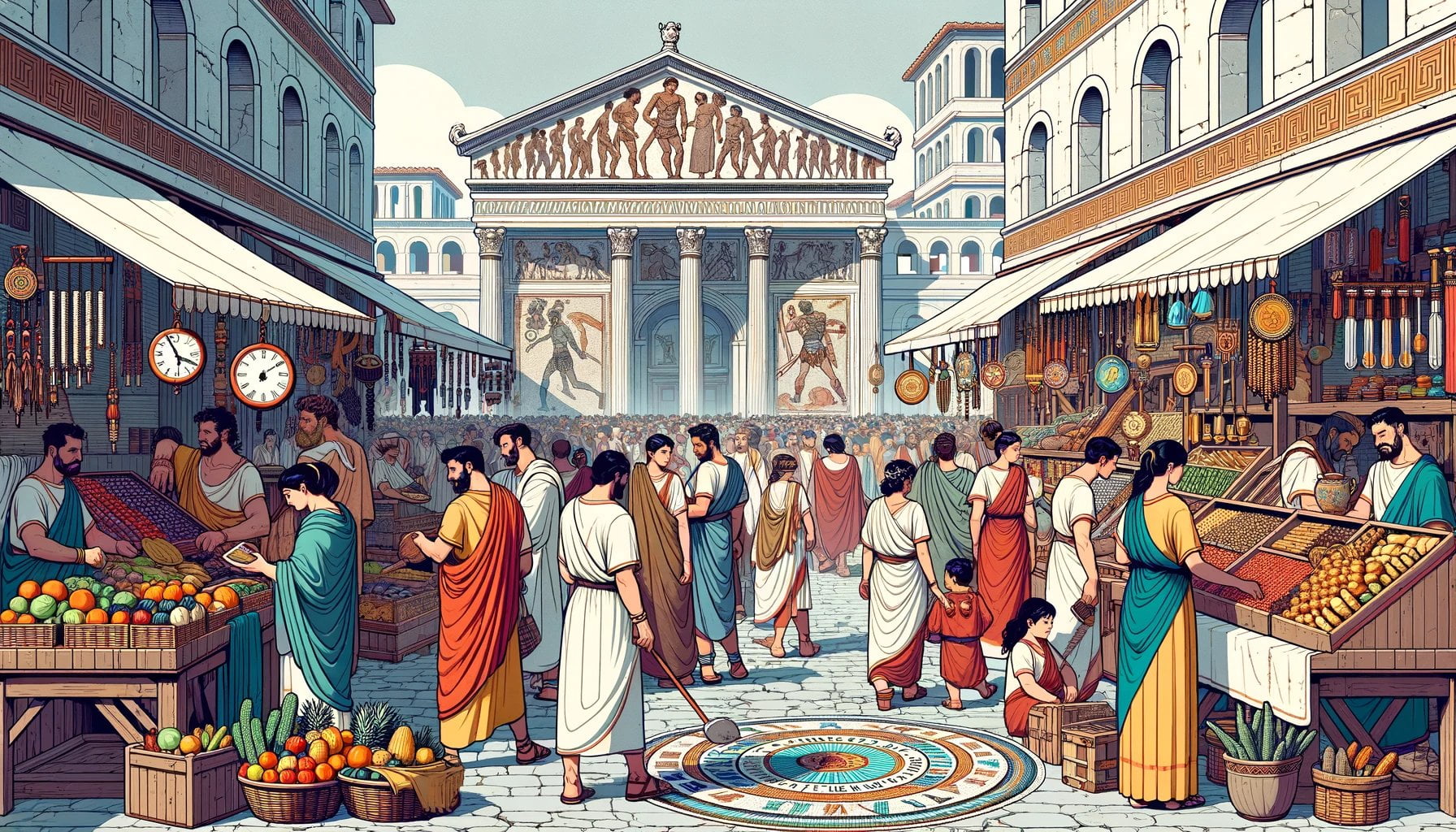
FAQ
Q1: What were some significant entertainment venues in Ancient Rome?
A1: Some significant entertainment venues in Ancient Rome were the Circus Maximus, Roman arenas, and gladiator contests.
Q2: Where were the most prestigious chariot races held in Ancient Rome?
A2: The most prestigious chariot races were held in Rome’s Circus Maximus. However, other major cities like Antioch, Alexandria, and Constantinople also had circuses for hosting these races.
Q3: What types of events were hosted in Roman arenas?
A3: Roman arenas hosted events using exotic animals, which were captured from different parts of the empire. These animals would fight each other or fight with humans.
Q4: Why were gladiator contests popular in Ancient Rome?
A4: Gladiator contests provided the crowd with weird and spectacular performances, allowing them to escape the ordinariness of daily life.
Q5: What were triumphs in Ancient Rome?
A5: Triumphs were celebrations of military victories and involved a military parade through Rome. The parade would start at the Porta Triumphalis and end at the temple.
